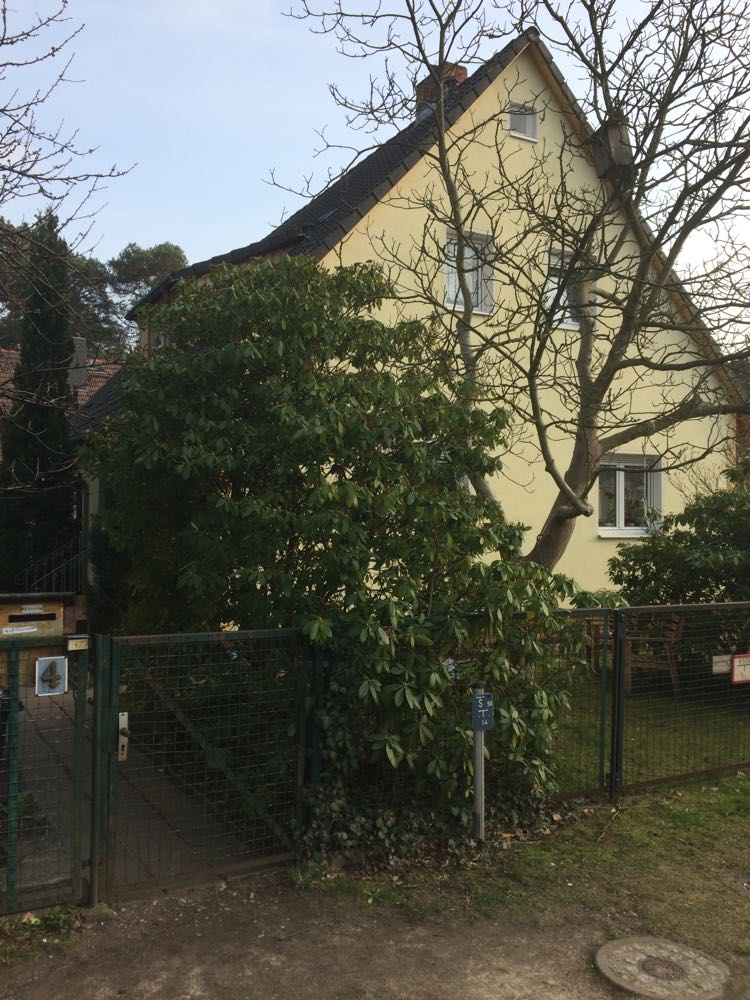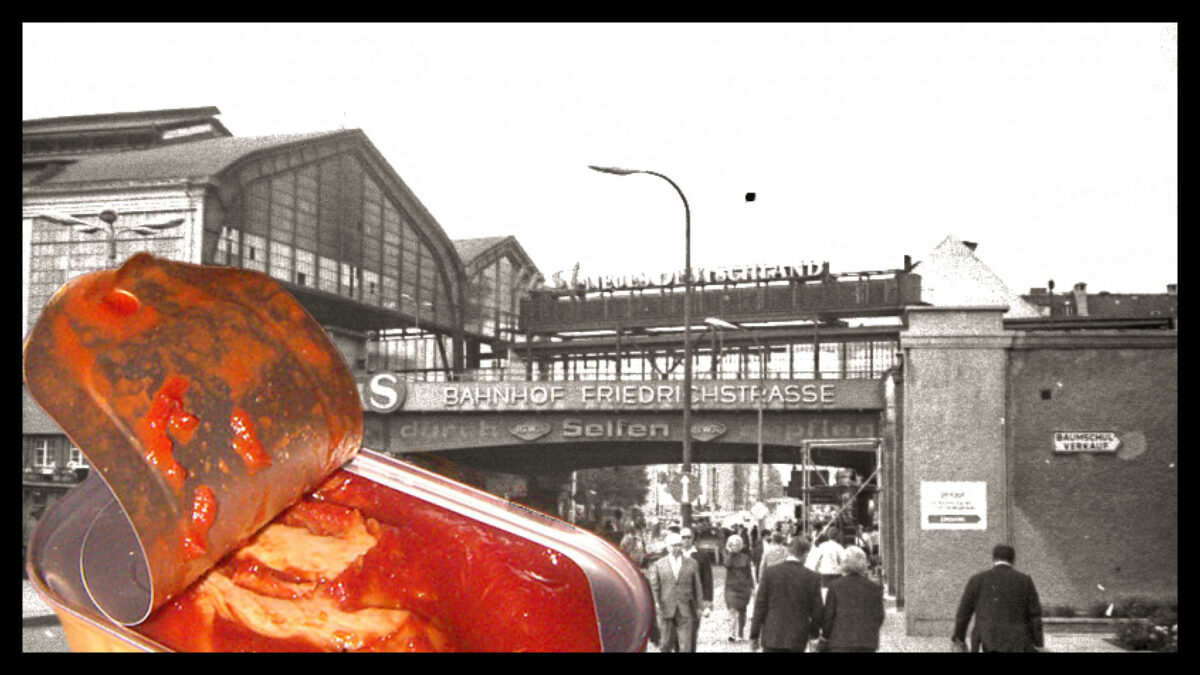Anshel Cohen, 24, half-Jewish and half-German, tells the story of how a family favourite meal was born during the aftermath of World War II in Europe
In 1948 Alfed, a small town in Lower Saxony, my Oma’s (Grandmother) family were finally reunited in a refugee camp. She was thirteen, and the first meal they shared was the pasta bake she made with their small rations of cream, some pasta and the smoked mackerel they’d managed to find. It must have been a huge relief for them to be together again.
“We had just made the two rooms in the refugee camps temporarily homely and now prepared our first meal where we were all together again, a simple fish dish that my thirteen-year-old daughter Bärbel had prepared, and was therefore given the name “Banüfia”, [short for Barbel-Nudel-Fischauflauf which translates as Bärbel’s pasta fish bake] in her honour,” my grandfather wrote in his memoirs.
Two generations later, we still make it, and every time I eat it I’m reminded of how lucky I am – and how expensive smoked mackerel has become!

Between 1944 and 1945, my great-grandfather was held as a prisoner-of-war in Canada for aiding the Nazi war effort as an engineer. After the war subsided, he was released to the American zone (the west of Germany was divided into sectors by the Allies at this time). This was fortunate as like many German Prisoners of War, he could have faced being worked to death in the USSR-controlled east.
My Oma lived with her mother and three sisters in Kleinmachnow, just outside of soon-to-be East Berlin. Resources were limited and food was scarce. My great-grandmother had a type of mental or neurological condition which impacted her everyday life severely (we still don’t know whether it was early-onset dementia or something else), so the girls had to take on a lot of responsibility. In the woods where they went to gather food (like nettles for nettle soup), there were some druken Russian soldiers who would often rape women. My Oma was still only ten, so she was sent instead of her older teenage sisters to protect them and thankfully was safe.

This was the aftermath of the Second World War, as The Red Army and the Allies clashed in Berlin. Sometimes the Soviet soldiers would shoot indiscriminately, and my Oma remembers them raiding the house and stealing some chocolate the family had stashed away. The girls saw dead bodies, and clearly all of them experienced a lot of danger, but to this day my Oma remains a very strong character. In 1946, after the fighting subsided, my grandmother’s sister Christa, who was 15, were smuggled across the border in a train to meet my great-grandfather in Alfeld.
Two years later, in 1948 Christa went back to the Soviet-controlled east to get my Oma. My great-grandfather had arranged fake papers so that they could be airlifted (it was the Berlin Blockade and roads and trains leading west were blocked by the Soviet Union due to a conflict with the Allies). They couldn’t take anything with them from their house in Kleinmachnow when they left, because if they had, they would have aroused the suspicions of the Russian soldiers at the checkpoint and would have been arrested. They kept their papers in their underpants.
Since it was too dangerous for everyone to cross at once, later that year Christa had to surreptitiously cross what was known as the Green Border (from 1945 to 1952 there were large areas of countryside on the border between what became West and East Germany that you could cross unnoticed) again to get her mother (my great-grandmother) and youngest sister. In Alfeld they had few possessions, but at least they weren’t apart.

My mother didn’t really eat “Banüfia” much, but apparently when we went to visit my Oma when I was younger I absolutely loved it. I don’t remember that, but my mum then started making a fancy, healthier version of the recipe. Now we eat it with things like brown pasta, soya cream and kale (Oma isn’t so keen on the vegetables).
It makes me feel both connected to and disconnected from my past. I’ve never had to experience being displaced. I’d say I live a very privileged existence, so when we sit down and have it I think about how I don’t live with the kind of uncertainty my Oma’s family faced.
My grandmothers were both refugees: my dad is Jewish; his mum (my Nana) arrived in the UK on the Kindertransport in 1939 from Vienna, fleeing the Nazis. She was fourteen when she had to leave. Later, she was luckily reunited with both her mother and father; but many other children never saw their parents again.
Before the war both of my grandmothers’ families had lived comfortable lives. That’s the story of a lot of refugees, not just as a result of the Second World War but people who experience conflict, persecution or economic crisis anywhere. It could be anyone and we should show compassion.
I am grateful that I can share Banüfia with my family without having to worry, but not everyone has that luxury.
Mackerel Pasta (Bänufia) recipe:
Time: Preparation takes about 20 mins. About 45 minutes to an hour baking time, depending on how you brown you like the top
Cost: £
Serves: 4
Difficulty: Easy
Equipment you’ll need:
- A big saucepan
- A knife and chopping board for leeks
- A frying pan for the vegetables
- A jug for milk
- An oven
Ingredients:
- 500g pasta (we use wholemeal nowadays, my grandma uses standard white). I recommend fusilli but it can be made with any type of pasta.
- 4 fillets of Smoked Mackerel
- A glug of vegetable oil/soy sauce/ liquid aminos
- Any green vegetable- we usually use 1 pack kale, 3-4 leeks or a medium sized cabbage, (my grandma doesn’t include this- this is our addition)
- 1x small carton of soya cream (our version) or half a cup of milk (my grandma’s version)
- 3 eggs
- Chilli powder (our version) or Black Pepper (my grandma’s version)
- Grated Cheese on top (we usually use cheddar, I will need to check what my grandma uses)
- Tomato sauce (can be pre-made)
Method:
1. Preheat the oven to 180C
2. Cook the pasta as per the instructions on the packet, then drain.
3. Lightly stir-fry the vegetables (if you are making them) for about 5-10 minutes, in oil and a bit of soy sauce and/or liquid aminos if you wish.
4. Place about ½ to 2/3 of the pasta at the bottom of a casserole dish. Then place about ½ of the vegetables on this.
5. Remove the skin (if the mackerel has skin) and break up the fillets into small, bite sized chunks. Scatter these on top of the vegetables.
6. Put the remaining vegetables on top of this.
7. Put the remaining pasta on top of this, covering the vegetables/mackerel completely.
8. Place the inside of the eggs and the soya cream/ milk into a jug, and add the chilli powder/black pepper. Whisk until the eggs have completely broken up and the mixture has one consistency.
9. Pour this on top of the pasta dish, making sure to cover all parts equally.
10. Grate cheese on the top of the bake- be generous! This makes it brown much more nicely.
11. Put in the oven for 45 minutes to an hour (depending on how brown and crunchy you like it).
Gretel’s Tip: As an extra, serve with tomato sauce – my grandma makes her own, delicious tomato sauce, but we usually use store bought sauces.

